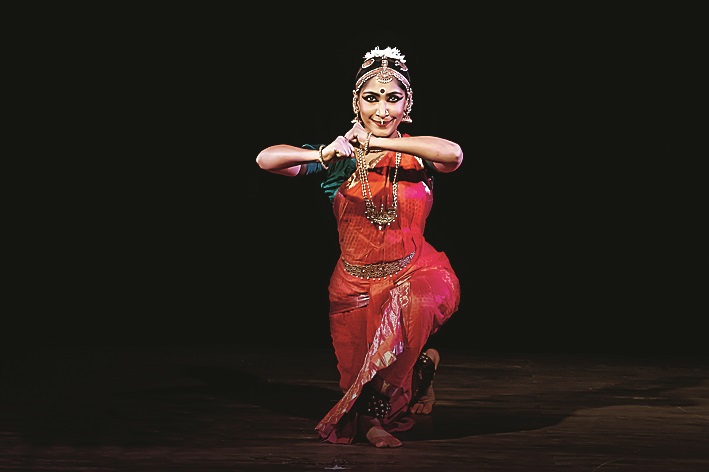In the modern world, with all its fragmented inadequacies and its yawning fault lines, it is important to look at classical dance afresh. Galvanized by an inner force, the dance forms are energetically practised and propagated. The most consummate dancers have re-invoked the perennial repeatedly, but it is also widely acknowledged that newer directions and more modern mandates are necessary for these forms. In this context, methods of presentation have been questioned and reimagined. In recent times we have witnessed the emergence of new platforms for young talent.
Seeking fresh charters for Indian classical dances, the Kalavahini Trust has been doing seminal work towards “identifying and nurturing committed dancers of the next generation” under the headship of Malavika Sarukkai. A recent collaboration with Sparsh resulted in two Bharatanatyam performances at the ICCR auditorium.
Jyotsna Jagannathan’s performance was self-possessed. Neat in her executions of the adavus, she presented a gentle, unhurried mallari, rich with evocative imagery and snapshots. Her second piece was a varnam into which she infused a sense of joy and passion. The oft-performed “Krishna nee begane baro”, replete with eloquent mother-love* as Yashoda reprimands and humours the little Krishna — mischievous, manipulative and lovable — was dynamic. She concluded with a charming tillana.
Aditya PV’s performance, displaying a powerful body discipline and enchanting agility, had a stunning luminosity that lit up the stage from the moment he entered it. His first piece, Ripples, was themed on water and its centrality to life, living and to the human body. Using a powerful and individual vocabulary, he drew a comparison between water and dance, with references to fluidity, turmoil and calm. Water was also fundamental to his second piece, Samyoga, in which he delved into Krishna’s intense relationship with the Yamuna. His final offering, a kriti created by Dikshitar, retained the metaphor of water, the Ganga symbolizing the connection between life and death. His performance was confident, absorbing and high energy.
Yet another platform for the promotion of young artistes, Navapallava, had dancer-choreographer Sharmila Biswas, supported by the Alka Jalan Foundation, present Meenakshi Medhi in a Sattriya dance performance. She chose a ramdani and a shlokabhinaya, which offered her an opportunity to display the soft and graceful aspects of her form, into which an emotional strand had been intertwined, alongside the vigour of its pure dance. The other dancer for the evening, Shruthipriya Ravi, selected the piece, “Aananda Koothaadum”. It was an interesting demonstration of the five yatis or syllabic patterns of the Natya Shastra choreographed into a lively item.
Nandanik Movement Arts’s recent Manipuri dance evening, under the direction of Poushali Chatterjee, entitled Yugasandhi, started with Gour Chandrika which traditionally begins sankirtan and raas rituals. Through Krishna roop varnan, sakshat darshan, pung vadan and Hari sayol tara, the pure dance and abhinaya aspects of the form were explored.










